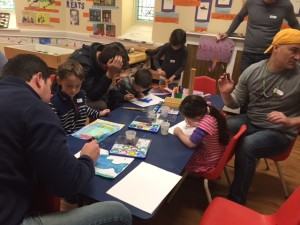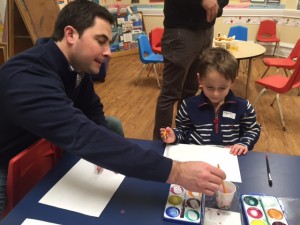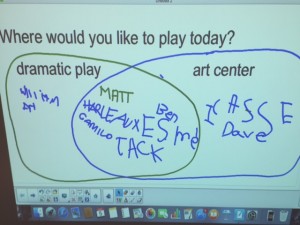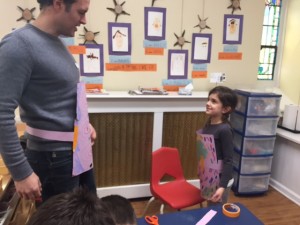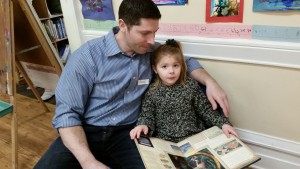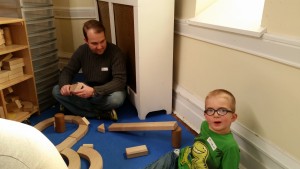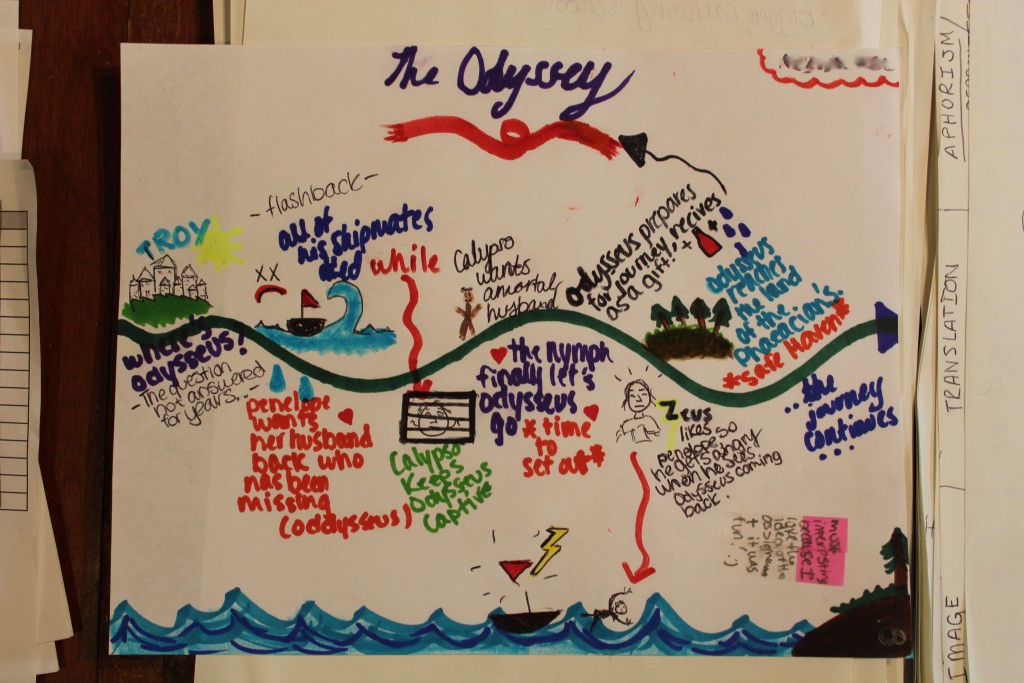Our class recently completed a study of Ezra Jack Keats’ work. In summation, we decided to have each child find their favorite book. Once this was done, the children then found their favorite illustration in their favorite book. The children carefully studied the artwork and discussed what media they thought Keats had used. After analyzing, the children worked very hard on recreating the art on 8″ x 10″ canvasses, which pretty much replicated the page sizes in the books. All of the children painted the background of their canvasses first, just like Keats. What struck me the most was the incredible focus that the children had, and the artistic decisions that they made as they worked. All worked a minimum of two sessions on their canvasses.
William chose to paint this scene from Louie’s Search:
 He then explained in writing, “I like the part when Louie gets chased.” William’s choice of quick brushstrokes made his painting even more “threatening” than the original.
He then explained in writing, “I like the part when Louie gets chased.” William’s choice of quick brushstrokes made his painting even more “threatening” than the original.
Levi chose to paint this page from Dreams:
 Levi said, “I chose Dreams because I like when he looked out of the window.” Levi further verbally explained that the character, Roberto, “was watching his toy mouse make shadows when he fell,” thereby affirming his comprehension of the story.
Levi said, “I chose Dreams because I like when he looked out of the window.” Levi further verbally explained that the character, Roberto, “was watching his toy mouse make shadows when he fell,” thereby affirming his comprehension of the story.
Esme collaged and then painted this scene from The Trip:
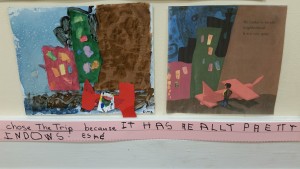 She surprised me by writing that she chose this page because “it has really pretty windows.” She spent a full hour snipping tiny windows and painting them different colors before carefully affixing them to her canvas.
She surprised me by writing that she chose this page because “it has really pretty windows.” She spent a full hour snipping tiny windows and painting them different colors before carefully affixing them to her canvas.
Harleaux selected Pet Show and did this abstract, painted rendition, which she first sketched in pencil:
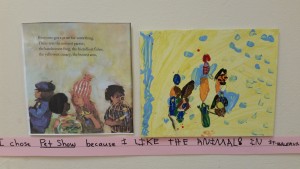 She wrote that she chose this page “because I like the animals in it.” Harleaux painted some wee details that most eyes would likely miss!
She wrote that she chose this page “because I like the animals in it.” Harleaux painted some wee details that most eyes would likely miss!
Jack used chalk pastels to recreate the windows in Dreams:
 He wrote, “I chose Dreams because I like the windows.” Jack revised his work at least five times, carefully brushing away the chalk, before finally being satisfied with the result.
He wrote, “I chose Dreams because I like the windows.” Jack revised his work at least five times, carefully brushing away the chalk, before finally being satisfied with the result.
Dutch chose to paint one of my personal favorites from Louie, wherein the main character dreams of feeding a puppet from a huge ice cream cone:
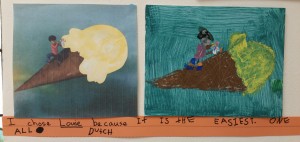 He surprised me by writing, “I chose Louie because it was the easiest one.” He further explained that it really wasn’t easy, at all. “Just painting the ice cream cone was easy.”
He surprised me by writing, “I chose Louie because it was the easiest one.” He further explained that it really wasn’t easy, at all. “Just painting the ice cream cone was easy.”
Luke selected this scene from Goggles before painting AND drawing elements with chalk:
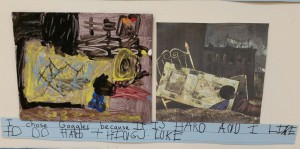 Luke wrote, “I chose Goggles because it is hard and I like to do hard things.” And did he ever work hard, over three days, on this piece.
Luke wrote, “I chose Goggles because it is hard and I like to do hard things.” And did he ever work hard, over three days, on this piece.
Cassie painted a different scene from Goggles:
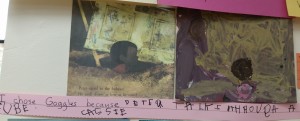 Cassie wrote, “I chose Goggles because Peter talks through a tube.” Cassie spent about 45 minutes painting and repainting and remixing paints on her background. Her finished canvas was so heavy, I wasn’t sure it would hang!
Cassie wrote, “I chose Goggles because Peter talks through a tube.” Cassie spent about 45 minutes painting and repainting and remixing paints on her background. Her finished canvas was so heavy, I wasn’t sure it would hang!
Not only were the children’s artistic choices fascinating, but so were their reasons for selecting which works to recreate. Some children focused on story elements while others looked at the actual art to aide in their decision-making processes. My co-teacher, Maria, and I were very impressed, indeed.

